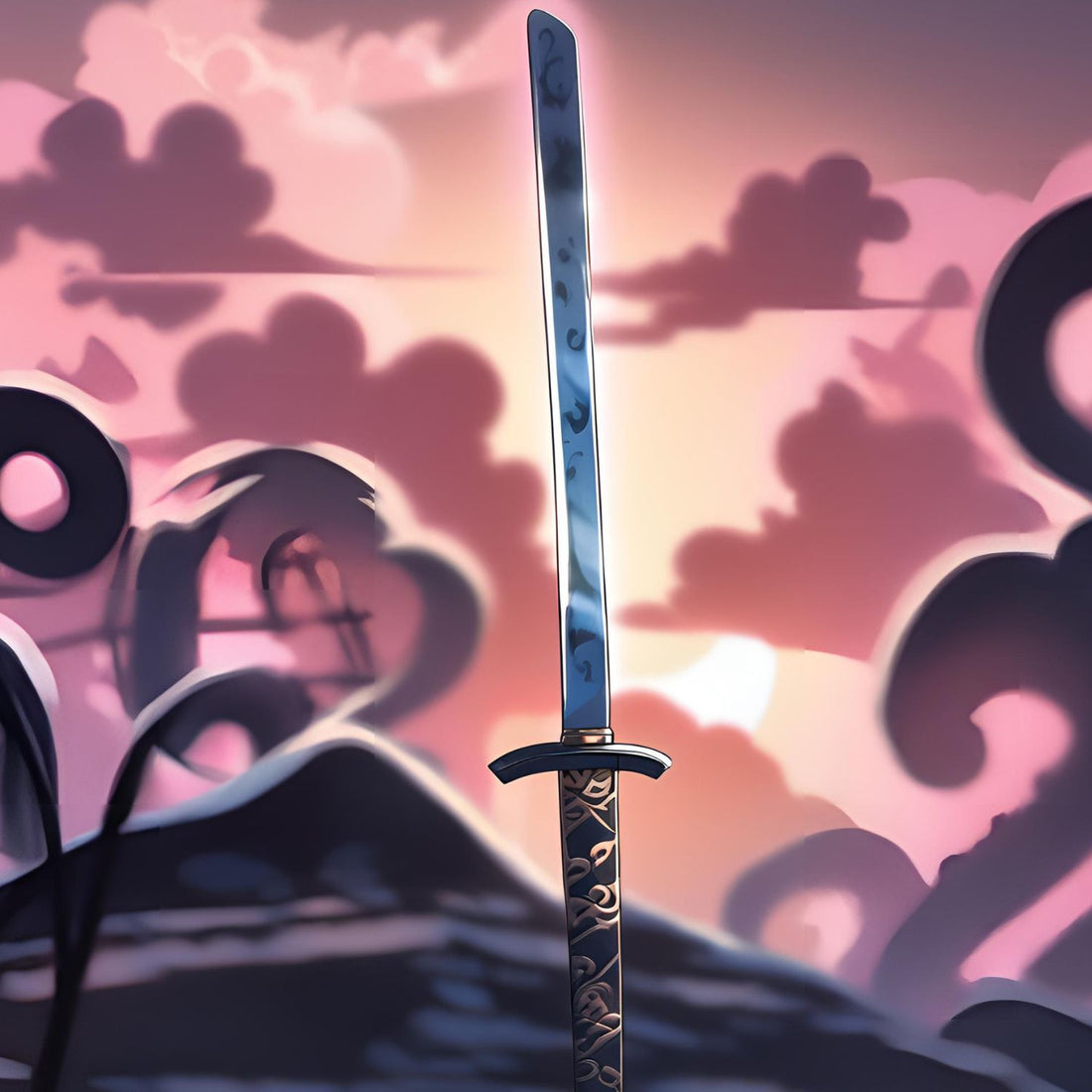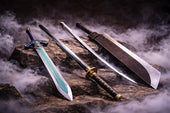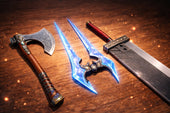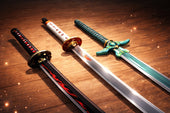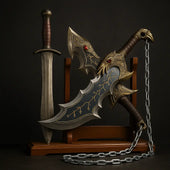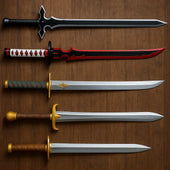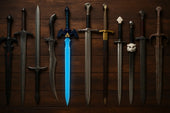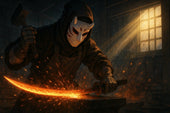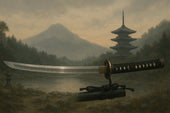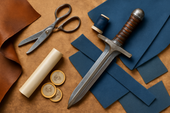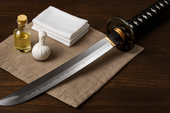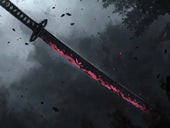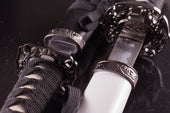The katana, often romanticised as the ultimate sword of the samurai, has captivated people worldwide for centuries! But amidst the allure and mystique, many myths have emerged about this iconic weapon. Did you know that some believe the katana can cut through anything with ease? In this article, we’ll dive into the most famous katana myths, debunking misconceptions and shedding light on the fascinating history and craftsmanship of these extraordinary swords. Join us on this journey to separate fact from fiction!
1. The Myth of the Unbreakable Katana
One of the most prevalent myths surrounding the katana is the belief that these swords are indestructible. This notion likely stems from their reputation as the weapons of choice for samurai, who were revered for their skill and the quality of their swords.
However, katanas, like any other weapon, have their limits. The materials and techniques used in forging a katana, primarily high-carbon steel, allow for a balance of hardness and flexibility, which is crucial for performance. A katana sword is designed to be tough but is not immune to breaking or chipping. In fact, there are numerous documented cases of katanas failing under extreme conditions. For instance, if a katana is struck against a hard surface or another blade at the wrong angle, it can chip or even shatter.
Real-life examples show that while katanas are incredibly resilient, they are not unbreakable. Proper care and maintenance are essential to ensure their longevity, and understanding their limitations is key to appreciating their craftsmanship.
2. Cutting Through Anything: Fact or Fiction?
Another common claim is that katanas can slice through any material effortlessly. This myth likely originated from films and pop culture, where dramatic sword fights depict characters effortlessly cutting through armor or even stone.
In reality, the physics behind sword fighting and cutting techniques reveals that the ability to cut depends on various factors, including the sharpness of the blade, the material being cut, and the technique used. Katanas are indeed designed for cutting, but they are not invincible tools. Their curvature and design optimise them for slicing, particularly against softer targets like flesh or thin materials.
When compared to other swords, katanas do have unique cutting abilities, but they are not superior in all contexts. For instance, while a katana might excel in a swift cut against an opponent, a heavier European longsword can be more effective for cutting through armor due to its weight and design. Understanding these nuances helps separate fact from fiction when it comes to a katana’s cutting prowess.
3. The Samurai’s Secret Weapon: Supernatural Powers
The myth that katanas possess magical or spiritual qualities is another fascinating aspect of their lore. Many believe that katanas carry the spirits of their makers or the samurai who wielded them. This belief is rooted in the cultural significance of the katana in Japanese tradition, where swords were not just weapons but also considered extensions of the soul.
While it’s true that katanas hold a special place in Japanese culture, the idea of supernatural powers is more myth than reality. The craftsmanship of a katana involves significant skill, dedication, and ritual, contributing to its revered status. Swordsmiths often performed spiritual rituals during the forging process, imbuing the sword with a sense of honor and respect.
However, it’s important to recognise that these qualities are rooted in culture and artistry rather than supernatural forces. The emotional and cultural connections people have with katanas reflect the deep respect for tradition rather than any magical properties.
4. The Sharpness Myth: What Really Makes a Katana Sharp?
Many people assume that katanas are inherently sharper than any other sword. While katanas are indeed known for their sharpness, there are several misconceptions about what contributes to that sharpness and how to maintain it.
Factors that contribute to the sharpness of a katana include the quality of the steel used, the forging techniques, and the blade’s geometry. A well-crafted katana can achieve a razor-sharp edge due to the skillful processes involved in its creation, such as folding the steel multiple times to eliminate impurities and create a strong, homogeneous structure.
However, maintaining a katana’s sharpness requires regular care and proper techniques. Many enthusiasts believe that a quick swipe on a honing stone will suffice, but proper sharpening techniques involve a series of steps to ensure the blade retains its optimal edge.
Additionally, using the right tools for maintenance, such as whetstones specifically designed for Japanese swords, is crucial. A lack of understanding about the maintenance process can lead to dull blades and misconceptions about the katana’s capabilities.
5. The Bloodthirsty Blade: Katana in Popular Culture
Movies, anime, and video games have perpetuated numerous myths about katanas, often portraying them as the ultimate weapon for heroes and villains alike. The romanticised image of the katana in popular culture often leans heavily on its supposed invincibility and supernatural qualities, leading to a skewed public perception of these swords.
For instance, in many films, katanas are shown slicing through multiple opponents effortlessly or surviving extreme conditions without a scratch. Such depictions can create unrealistic expectations for what a katana can actually do. This glorified representation tends to overshadow the skill required to wield a katana effectively, reducing the complexities of sword fighting to flashy movements and exaggerated outcomes.
Understanding these portrayals and the myths they propagate is essential for appreciating the true nature of katanas. While they are indeed beautiful and powerful weapons, they are also grounded in reality, requiring dedication, practice, and respect.
6. Understanding the Craftsmanship of Katanas
The craftsmanship of a katana is one of the most fascinating aspects of its history. Traditional katana making involves a complex process that has been refined over centuries. Understanding this process is key to appreciating the artistry behind these swords.
The process begins with the selection of high-quality materials, such as tamahagane (a type of steel produced in Japan). Swordsmiths fold the steel repeatedly to purify it, creating a strong, flexible blade that can withstand the rigors of combat. The forging and tempering processes are essential for achieving the katana's characteristic hardness and flexibility.
The role of the swordsmith is critical in creating a katana. These artisans are highly skilled individuals who dedicate years to perfecting their craft. Their expertise is reflected in the final product, making each katana a unique piece of art that embodies both beauty and functionality.
Conclusion
The myths surrounding the katana add to its mystique and allure, but understanding the truth behind these legends enhances our appreciation for this iconic sword! By debunking these misconceptions, we can celebrate the craftsmanship and cultural significance of the katana while gaining a deeper understanding of its history. So the next time you hear a tale about the katana, remember to consider the facts behind the fiction! Ready to explore more about the fascinating world of katanas? Let’s continue our journey into this legendary weapon!


